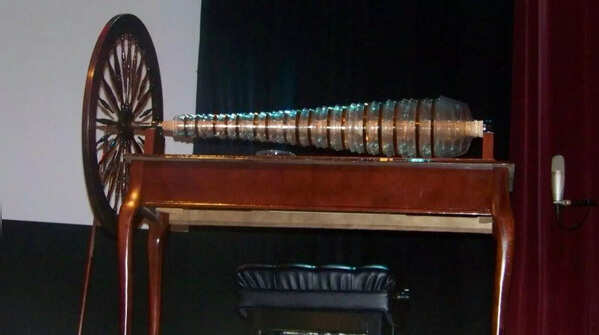- News
- This is known as the ‘most dangerous instrument in the world’—and it allegedly killed people; here's how
This is known as the ‘most dangerous instrument in the world’—and it allegedly killed people; here's how

This is known as the ‘most dangerous instrument in the world’
Benjamin Franklin is widely remembered for his role in politics, science, and innovation. However, one of his lesser-known inventions– a musical instrument– rarely makes it to the spotlight. Known as the glass armonica, this unique creation fascinated 18th-century audiences with its soft, ethereal tones. What made it especially remarkable was not just its sound, but the unusual reactions it triggered. Over time, the instrument was both admired and feared because some people believed its haunting music could cause unusual mental effects.
What began as an impressive musical invention gradually gained a troubling reputation. Benjamin Franklin’s creation, meant to bring beauty, became surrounded by stories and worries about its strange effects. What was once admired for its sound was now being talked about for all the wrong reasons.
Image credit: Canva

When sound meets science
According to a report presented by Lethbridge News Now, in the early 1760s, while in London, Benjamin Franklin attended a popular musical performance where musicians played tunes using water-filled glasses. Although intrigued by the idea, he found the setup limited and impractical. Determined to improve it, Franklin reimagined the concept, creating the glass armonica, a more refined, versatile, and playable version of the original instrument.
The instrument had a spinning rod with glass bowls of different sizes, each tuned to a different note. Musicians used a foot pedal to keep the bowls turning and gently touched the edges with wet fingers. This created a smooth, flowing sound that was soft, otherworldly, and unlike anything people had heard before.
Image credit: Stock

From drawing rooms to concert halls
The armonica became popular very quickly. Its soft, almost voice-like sounds attracted composers and musicians all over Europe. Famous composers like Mozart and Beethoven wrote music just for the instrument, and performers happily included it in concerts and shows. Franklin’s invention had found a place in serious music, and for a while, it seemed like it would be an important and lasting instrument.
Image credit: Pinterest

But then, the mood changed
But the early excitement about the armonica didn’t last long. According to a report presented by UNILAD, musicians began to experience health problems like headaches, dizziness, and confusion. Some thought the instrument’s unusual sounds might overstimulate the brain, while others believed the coloured paints on the glass bowls could be causing lead poisoning.
Audience members also felt these effects. Some people said they felt uneasy during performances, and in rare but serious cases, deaths supposedly connected to the armonica caused public worry. Because of this, local officials in parts of Europe gave warnings, and in some places, the instrument was completely banned.
Image credit: Canva

Music, madness, and mystery
Over time, the stories about the armonica became more serious. Once admired for its beauty, the instrument started to be connected with mental problems and strange effects on the mind. People began to say its eerie sounds could cause hallucinations, make performers emotionally unstable, or even have supernatural powers. Some believed the armonica’s music could call spirits or disturb a person’s mind. In this way, it became hard to tell what was science and what was superstition.
Image credit: Pinterest

The decline of a curious invention
Despite all the fear and rumours about the armonica, Franklin wasn’t affected and continued to play the instrument until his death in 1790. “Franklin himself ignored all the controversy and continued to play the instrument until the end of his life with none of the symptoms mentioned,” the Franklin Institute explained, as quoted by UNILAD. By then, thousands of armonicas had been made, but by the 1830s, public interest had faded.
The instrument gradually disappeared from mainstream music, overshadowed by newer inventions and wrapped in layers of mystery and myth. Today, the glass armonica survives in small, devoted circles of musicians who continue to preserve its unique and haunting beauty.
Disclaimer: The claims and stories surrounding the glass armonica, including its reported psychological effects and alleged links to death, are drawn from historical accounts, public beliefs, and folklore. While they are widely shared, their accuracy is still debated. This article presents them as part of the historical and cultural narrative, not as verified facts.
Image credit: Pinterest








